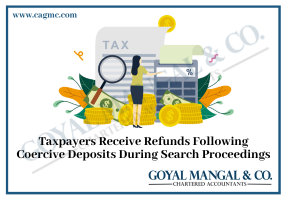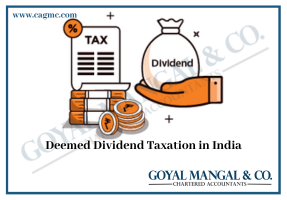
In corporate finances, private companies generally look for innovative planning to enhance shareholder value and optimize their capital framework. One such financial gain is the buy-back of shares by private companies. In this article, we will explain to you a buy-back of shares by private companies. We will be going to explain the concept of buy-back shares, their valuation, and the procedure for the buy-back of shares of listed companies. Furthermore, we are discussing whether is valuation required for the buy-back of shares in a private company.
|
Table of Content |
Define Buy-back of shares under the Companies Act, 2013
A Buy-back of shares under the Companies Act, 2013 is the process by which a company purchase its shares from their shareholders. It is discussed under section 68 of the Companies Act, 2013, and it gives the legal guidelines and structure for companies to rebuy their shares.
There are certain points about the buy-back of shares under the Companies Act, 2013:
- Authority and Approval: The buy-back must be authorized by the company’s articles of association, and the board of directors must pass a resolution authorizing the buy-back. Additionally, shareholder approval is required through a special resolution in a general meeting.
- Sources of Funds: Companies are required to utilize their free reserves, securities premium account, or proceeds from the issue of any shares or other specified securities for funding the buy-back. The buy-back cannot be financed through the proceeds of an earlier issue of the same kind of shares or other specified securities.
- Limitations: There are certain restrictions on the quantum of shares that a company can buy back.
- Timing: The Company cannot make a buy-back of shares within a time of a year from the preceding buy-back.
- Method of Buy-back: There are several methods for implementing the buy-back such as a tender offer, an open market, a book-building process, or a combination of these methods.
- Regulatory Compliance: There are certain guidelines given by the Securities and Exchange Board of India (SEBI), and buy-back must comply with regulatory needs.
Modes of BuyBack
There are several modes for the buy-back of shares by a company and these are given by the regulatory institutions such as the SEBI and the Companies Act, 2013. Here are some common modes:
- Open Market Purchase: The company buys it’s their shares from the open market through the stock exchange.
- From existing shareholders: The company creates an offer to all existing shareholders to buy back their shares on a pro-rata basis.
- Employee stock option plans (ESOP) Schemes: In this case company can buy back shares from employees or other beneficiaries under the said scheme.
Documents required for Buy-back of shares
There are documents needed for buy-back of shares are:
- Copy of Board resolution which is certified;
- Certified Copy of Special resolution along with explanatory statement;
- Mention the promoters of the company;
- Audited financial explanation of last 3 years;
- Declaration of solvency affidavit;
- Auditors report as declaration certificate;
- Securities holder before and after buy-back;
- Description of shares or other particular securities bought back SH-10;
- Compliance certificate SH-15;
- Statement of Assets and Liabilities, which is not more than six months old from date of the offer document.
- Completion of buyback
<h2id=”act” >Valuation for Buy-back of Shares Companies Act, 2013
The question arises as to whether is valuation required for the buyback of shares in a private company, so the answer is yes as per the Companies Act, 2013, the valuation for the buy-back of shares is critical and conducted by an independent valuer. There are relevant provisions about the valuation process that make sure that the buy-back of shares is provided in Section 68 and Rule 17 of the Companies (Share Capital and Debentures) Rules, 2014.
Here are key elements about the valuation for the buy-back of shares:
- Appointment of Independent Valuer: An independent valuer has done the valuation, and has the relevant experience and requisite qualifications. The valuer must not have any direct relation or interest in the company or its promoters.
- Valuation Methods: The valuer typically employs recognized valuation methods to determine the fair price of the shares. Common methods include the discounted free cash flow method, comparable company analysis, and net asset value method, among others.
- Valuation Report: Articles should be authorised or changed by passing a special resolution in a general meeting. Need to pass a special resolution in the general meeting; however, in case the buy-back is up to 10%, then the resolution must be passed at the board meeting.
- Board Approval: The valuation report is reviewed by the board of directors and, based on its recommendations, the buy-back of shares resolution is approved.
- Disclosure in Letter of Offer: The valuation details, including the methodology and the fair price arrived at, are disclosed in the letter of offer that is sent to the shareholders. The board resolution and special resolution have passed the maximum number of shares that can be brought back in a financial year is 25% of its paid-up share capital, and free reserves. The post-buy-back debt-equity ratio must not exceed 2:1.
- The equity shares of buy-back in any financial year should not exceed 25% of its paid-up equity capital.
- The specified securities and shares must be completely paid up.
- SEBI Regulations: If the company is listed on a stock exchange, it must also comply with the valuation requirements specified by the SEBI. The company should manage a register for the buy-back of shares in form SH-10. Along with submitting a return of buy-back in Form SH-11 annexed with compliance certification in Form SH-15. These are signed by 2 directors out of which one is the managing director.
- The buy-back share must be fulfilled within a period of a year from the passing date of board resolution or special resolution, as the case may be.
- Within the 7 days of completion of buy-back shares should be physically destroyed.
- There must be no new share issues within six months of buy-back, excluding sweat equity, issue of bonus shares, conversion of preference/ debt shares into equity, and ESOPs.
- The company must not be using any borrowed money from financial solutions and banks for a buy-back.
- Once the buy-back shares have been announced to shareholders, there will be no withdrawal of offer is permitted.
Procedure for Transfer of Shares
Procedure for Buy-back of shares of listed Companies
Here is a step-by-step procedure for buy-back of shares of listed companies:
- Board Approval: The board approval involves the number of shares to be re-buy, the price of the buy-back of shares, and the maximum amount of funds allocated for the buy-back of shares.
- Shareholder Approval: The shareholders have passed a special resolution in a general meeting to authorize the buy-back of shares. This resolution must mention the buy-back of share price, the maximum no. of shares bought, and the buy-back method.
- Public Announcement: It is compulsory to make a public announcement for the buy-back of shares along with detailed information.
- Letter of Offer: This includes detailed information about the buy-back of shares along with all terms and conditions.
- Registrar of Companies (RoC) Filing: File the draft documents for buy-back of shares with the RoC for their approval.
- SEBI Compliance: Ensure compliance with SEBI regulations regarding the buyback. This includes adherence to the SEBI (Buy-Back of Securities) Regulations, 2018.
- Open a Separate Bank Account: Open a separate bank account for the buyback process and deposit the requisite funds in that account.
- Appointment of Intermediaries: Appoint intermediaries such as a merchant banker, registrar to the buyback, and other professionals as required.
- Public Advertisement: Advertise the public announcement and the letter of offer in national and regional newspapers, as required by SEBI regulations.
- Tendering Period: Commence the tendering period during which shareholders can tender their shares for buyback.
- Verification of Tendered Shares: Verify the shares tendered for buyback and accept them by the terms of the offer.
- Payment to Shareholders: Payment has to be made to shareholders whose shares are accepted for buy-back of shares within the time structure.
- Registrar to the Buyback: They are responsible for making sure the buy-back of share process is conducted in compliance with the regulatory needs.
- SEBI Filings: File the post-buyback disclosures and reports with SEBI.
Restrictions on Buy-back of Securities
There are restrictions on buy-back of securities in certain cases as per section 70 of the Companies Act, 2013:
- By group of investment Companies or investment; or
- By any subsidiary including its subsidiaries;
- The Company has defaulted in filing annual returns, financial statements or dividends;
- At the time the company has defaulted in interest payable, or repayment of deposits thereon, or preference shares, or redemption of debentures or repayment of any term loan.
- In case of remedied default, the prohibition is lifted and three years have over after such default ceased to subsist.
Final Words
In conclusion, the buy-back of shares is a powerful financial technique for private companies looking to optimize their capital framework and improve shareholder value. The article included thorough research and analysis about the buy-back of shares and their benefits to shareholders. In the quickly evolving finance world, the buy-back of shares remains a versatile and dynamic plan.







